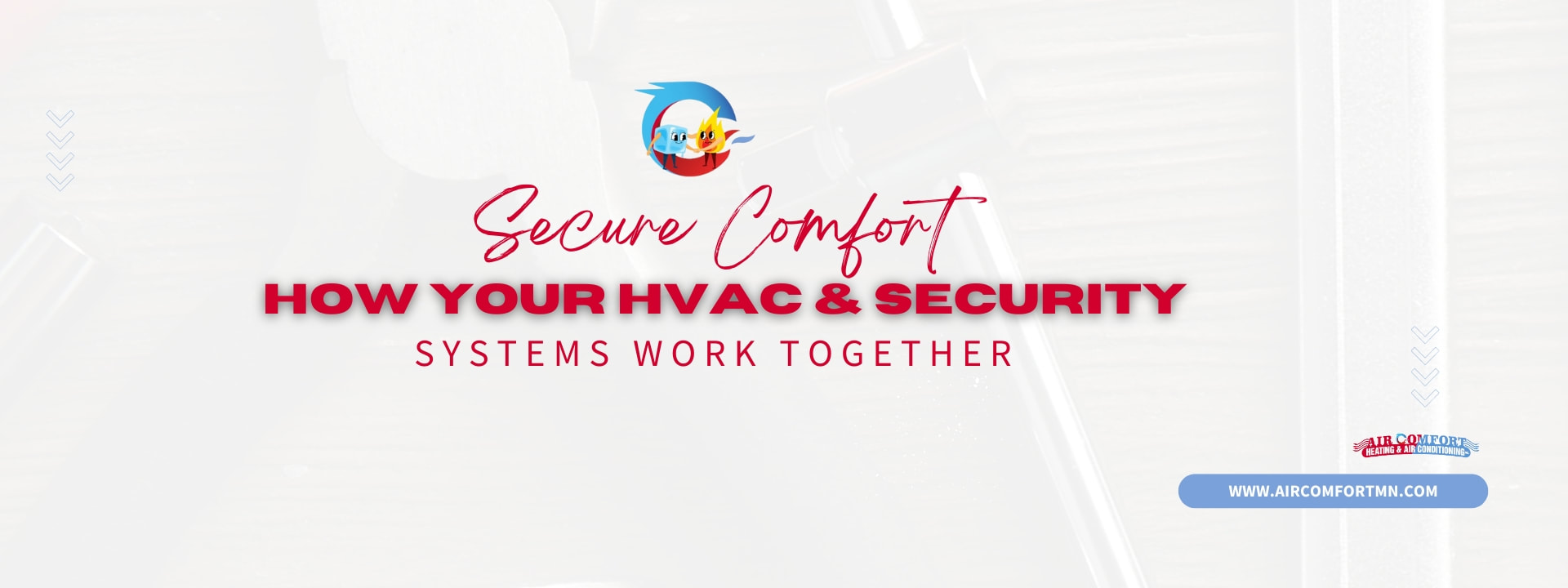|
In the era of smart homes, integrating your HVAC system with your home security setup is not just a convenience—it's a significant enhancement to your home's efficiency and safety. As technology advances, the connection between HVAC and home security systems becomes increasingly synergistic, providing homeowners with unprecedented control over their environment and security. Let’s explore how these two systems can work together to create a smarter and safer home.
Understanding the Connection The integration of HVAC and home security systems primarily revolves around the use of smart technology. Smart thermostats and home security platforms can communicate, allowing for shared control and data exchange. This connectivity means your HVAC system can play a direct role in home security measures and vice versa. For example, smart thermostats can automatically adjust based on security settings, or security systems can provide alerts if the HVAC system behaves unusually, indicating potential security issues or mechanical failures. Benefits of Integrating HVAC and Security Systems Energy Efficiency and Control: Integrated systems allow for more precise control over your home’s climate and energy use. For instance, your security system's cameras and sensors can detect when rooms are unoccupied and communicate with the HVAC system to adjust the temperature, saving energy without compromising comfort. Improved Security Monitoring: Your HVAC system can contribute to home security by helping to regulate the environment in response to security breaches. If smoke is detected, the HVAC system can automatically shut down to prevent spreading, while alerting homeowners and authorities through the security system. Enhanced Safety Features: Integration also enhances safety by monitoring the health of your HVAC system. Security systems can alert you if the HVAC system stops working, which could prevent dangerous situations like pipes freezing in winter or heat-related health issues during a summer outage. Smart Thermostats and Security Smart thermostats are pivotal in this integration. They act as the control hub, linking HVAC operation with security settings. Many smart thermostats can be controlled remotely via apps, which can also manage security cameras, alarms, and other smart devices. This unified approach ensures that homeowners can manage their home’s climate and security from anywhere in the world. Technological Solutions The technology enabling this integration includes Internet of Things (IoT) devices that allow seamless communication between different home systems. Platforms like Google Home and Amazon Alexa are often used to manage these devices under one ecosystem, providing an intuitive interface for controlling both HVAC and security systems. Installation and Setup Setting up an integrated system requires selecting compatible devices that can communicate with each other. Professional installation is recommended to ensure that the systems are properly synced and that all features are optimized. A professional can also provide advice on the best devices and setups for your specific needs. The integration of HVAC and home security systems represents a significant step forward in home automation. By connecting these systems, homeowners gain more control over their environment, enhance their home’s security, and improve energy efficiency. As smart home technology continues to evolve, the possibilities for integration will expand, making homes smarter, safer, and more connected. Interested in integrating your HVAC and home security systems for a smarter, safer home? Contact Air Comfort today.
0 Comments
Leave a Reply. |
AuthorVarious. Archives
July 2024
Categories
All
|
CALL NOW: 763-753-6623
Privacy Policy l Cookie Policy l Conditions of Use l Notice and Take Down Policy l Website Accessibility Policy
© 2024 The content on this website is owned by us and our licensors. Do not copy any content (including images) without our consent.
Website managed by Go Savvy Social
Privacy Policy l Cookie Policy l Conditions of Use l Notice and Take Down Policy l Website Accessibility Policy
© 2024 The content on this website is owned by us and our licensors. Do not copy any content (including images) without our consent.
Website managed by Go Savvy Social


 RSS Feed
RSS Feed